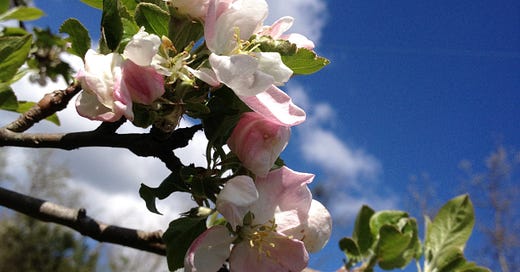Apple blossom time
Spring in Maine is a long, halting, stuttering, backwards-and-forwards process that sometimes seems to begin in January and doesn’t reach its peak until late in May. Even in May there have been years when frost and snow were featured performers. But I’m happy to say, with growing confidence, that spring has indeed arrived. And finally …
Keep reading with a 7-day free trial
Subscribe to On the Kitchen Porch to keep reading this post and get 7 days of free access to the full post archives.




